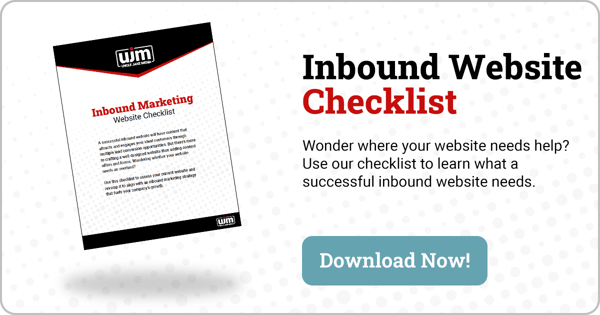
5 Ways to Attract Visitors to Your Website

Once your website is live, the real work begins: driving the right people to it.
It’s easy to fall into the mindset of “build it and they will come,” but websites aren’t baseball fields and Kevin Costner isn't on your marketing team...

Without a strategy, even the most beautifully designed site won’t bring in meaningful traffic or qualified leads.
At Uncle Jake Media, we’ve helped dozens of clients turn underperforming websites into lead-generating machines. And whether you're a growing small business or a seasoned marketing team, the principles are the same.
Here are five proven strategies to attract more visitors to your website.
1. Identify and Understand Your Target Audience
One of the most overlooked steps in growing website traffic is simply knowing who you’re trying to attract.
Before creating content or optimizing your site, you need to answer:
- Who is my ideal customer?
- What problems are they trying to solve?
- How do they search for information online?
The more detailed your buyer persona, the more tailored your content and design can be. Tools like HubSpot’s Persona Builder can help you define key demographics, pain points, and buyer behaviors.
Let your target audience shape your messaging, site layout, and even your visual style. If your goal is to attract married women with school-age children, your tone, imagery, and content topics should reflect their lifestyle, priorities, and challenges.
UJM insight: A website should be about your customer, not you. If your content speaks to your audience's pain points and goals, you're far more likely to earn their time and trust.
Quick Win: Interview a Current Customer
Use 3 to 5 quick questions via email or Zoom to ask a loyal customer. Here are some examples:
- Why did you choose to work with us?
- What were you searching for online when you discovered us as the solution to your needs?
- What business problems or questions did our team help you solve?
Turn their answers into buyer persona insights and, even better, into website content.
2. Write Website Content That Solves Real Problems
To increase qualified traffic to your website, you need content that ranks well and resonates with readers.
That means striking a balance between SEO and storytelling.
Your website content should:
- Address specific problems your audience is actively searching to solve
- Be structured with clear headings, bullet points, and internal links for easy reading
- Include long-tail keywords naturally in titles, intros, and subheads
- Provide real value, not fluff. Write content that shares your team’s opinion or unique perspective on a topic.
Common digital content formats that perform well:
- Blog posts that answer common industry questions
- Educational guides, checklists, or comparison tools
- Case studies that show how you solve problems
- Downloadable resources like eBooks or templates
UJM insight: We often recommend starting with the questions your sales team gets most often. If your prospects ask it in a meeting, someone else is Googling it right now.
Quick Win: Write a “How-To” Post Based on a FAQ
Take one question your team is tired of answering (like “How often should I update my website?”), and turn it into a helpful, 700 to 1,000-word blog post.
- Use the question as your title
- Answer it clearly in the first paragraph
- Break it into 3-5 subpoints or steps
- Provide your unique perspective based on your expertise
- End with a call to action (Download a Checklist, or Contact Sales)
- Create FAQs to add to your blog post or website that answer common related questions to the blog topic.
3. Establish a Consistent Marketing Content Calendar
One of the fastest ways to fall off Google’s radar (and your audience’s) is to let your site go stagnant.
Search engines favor active websites. So do your visitors. A consistent content schedule shows both humans and algorithms that you’re a current, trustworthy source of information.
Our advice:
- Start with a quarterly content calendar
- Publish one high-quality piece of content per month if weekly isn’t realistic
- Repurpose content (turn webinars into blog posts, or blogs into social media posts)
Planning in advance helps ensure your content supports your broader sales and marketing goals.
UJM insight: Don’t just create content for content’s sake. Focus on quality, relevance, and aligning each piece with where your audience is in their buying journey.
Quick Win: Build a 90-Day Marketing Content Plan
Create a simple spreadsheet with these columns:
- Content Topic: What is it about?
- Content Goal: What is the goal of the information?
- Target Persona: Who is this content speaking to?
- Format: Blog, checklist, guide, social post, etc.
- Call-to-action: What action do you want the reader to take?
- Due Date: When do you want to publish this content?
Use past email questions, sales call notes, or top-performing blogs to fill in the first few ideas or topics in your marketing content calendar.
4. Monitor and Optimize Website Performance
Creating content is only half the battle. If you’re not tracking how it performs, you’re flying blind.
Use tools like Google Analytics, HubSpot, or Hotjar to:
- Identify which pages or blogs are driving the most traffic
- See where users drop off or bounce
- Analyze traffic sources (organic search, social, referral, etc.)
- Evaluate conversion paths. Are visitors taking action?
You may find that a simple headline tweak, improved page load speed, or new internal link boosts performance significantly.
UJM insight: Data tells the real story. We’ve seen small UX or content changes double the time a user spends on a website. Regular monitoring helps your website evolve in the right direction.
Quick Win: Run a Traffic and Bounce Rate Report
In Google Analytics (GA4):
- Go to Reports > Engagement > Pages and Screens
- Sort by traffic
- Flag high-traffic pages with high bounce rates
Pick a page and update the CTA, headline, formatting, or content, then watch the numbers next month.
Promote Your Content On Social Media
Posting on social media is vital because it is a fantastic way to distribute your content and entice the public to visit your site. You can use relevant hashtags to be found in searches. If your social media followers find the content interesting, they might share it with others, and you’ll get their traffic as well.
You can also consider paid social media. This means that you can boost a post for a particular audience that might find your company interesting. These boosted posts can be inexpensive and produce fantastic results in terms of increasing your visibility.
Next Steps
Do you think your website and marketing strategy is optimized to attract the right visitors to your website? Utilize some of our other resources to learn how to get more out of your website and marketing efforts.
-
Read our article called How To Design Your Website As An Effective Marketing Tool.
-
Use our Free Website Grader to get an idea of how your website is performing right now.
Or contact Brady, our UJM expert, to chat about how our team can help get you and your digital presence on the right path.



